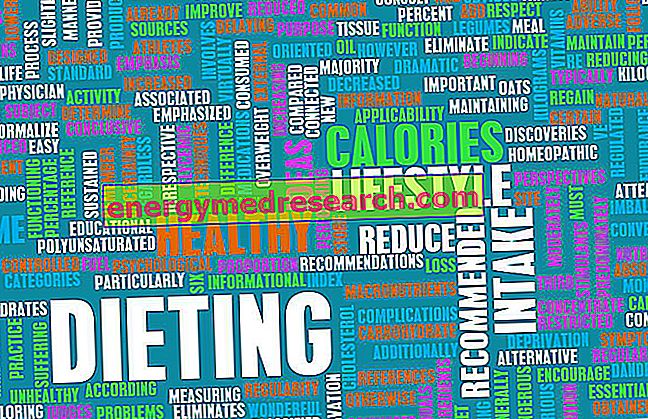
Nowadays, diets that are so-called "innovative" (or rather that depart from the scientifically founded nutritional balance principles) have become almost a "fashion"; in fact, while it seems a paradox, the diets that "tend" are precisely those "against the trend".
Will they really be that effective? Who follows them actually experiences weight loss?
The answer is certainly not simple; the only useful tool to satisfy a similar curiosity is statistics, even if sometimes this medium tends to distort reality.
A rather dated study, entitled " Popular diets: correlation to health, nutrition, and obesity ", attempted to assess the real weight loss effectiveness attributable to "fashionable" diets. Unfortunately, being an experimental one not very recent (2001), from the scientific point of view it is necessary to keep in mind that its results could NOT correspond to the contemporary general picture.
Personally, I believe that the popular dietary "trend" has remained fairly unchanged and is based on some very different principles (still a source of debate): elimination of meat and fish, reduction of carbohydrates, increase in proteins, etc.
NB . These indications are to be contextualised with reference to the guidelines for a balanced diet, in which fats represent about 25-30% of the total energy, proteins about 0.8-1.5g / kg of physiological weight (the percentage varies much based on the overall energy of the diet) and carbohydrates are all the remaining calories (50-60%).
However, those who followed a certain type of diet at the time, today could be noticeably thin or fat; even if, respecting the statistics, the research sample was composed of subjects who started nutritional therapy long or shortly before. Ultimately, the outcome of this research is to be considered a general reference; certainly, it is not an absolutism on which to build inalienable food rules. To do this, many more statistics, clinical trials and experimental applications on humans are needed; in other words, everything that has been done to establish guidelines for a healthy and correct diet.
Going back to the aforementioned publication, this has set itself the objective of examining the correlation between a set of nutritional indicators and the state of health, and the use of the so-called popular diets.
The project involved the involvement of the " Continuing Survey of Food Intake by Individuals ( CSFII ) 1994-1996 " in order to examine the correlation between "fashionable diets" and "nutritional quality"; the evaluation parameters were: the Index of a Healthy Nutrition (HEI), the Body Mass Index (BMI) and the consumption models.
The "prototype" diets analyzed were vegetarian (elimination of meat, poultry and fish) and NOT vegetarian. The latter were further subdivided into: low carbohydrate concentration (<30%), medium (30-55%) and high (> 55%). Then, within the one with a high content of carbohydrates, the subjects are newly divided into those who follow the food pyramid (USDA Food Guide Pyramid) and those who DO NOT use it (obviously, this is the pyramid in use in 2001, however not too different from the official contemporary one). Those who followed this principle had to respect a lipid percentage <30% and consume food based on recommendations. Finally, the group that did not respect the pyramid was further differentiated into: low fat consumption (<15%) and moderate (15% -30%). To complete, a review of the scientific literature was also conducted.
The research sample included 10014 adults, aged over or equal to 19, who were analyzed by the CSFII (1994-1996).
The results of the CSFII indicate that the quality of the diet (measured with the HEI) seemed higher in the group with high carbohydrate content respecting the pyramid (82.9) and lower in the group with low carbohydrate content (44.6 ).
Total energy intake was lower for vegetarians (1606 kcal) and in the high-carbohydrate group with low fat (1360 kcal).
In women, BMI appeared lower in the vegetarian group (24.6) and in the high-carbohydrate low-fat group (24.4). In men, the BMI seemed lower for vegetarians (25.2) and in the group that respected the pyramid with a high concentration of carbohydrates (25.2).
An extensive review of the literature has also been carried out, which suggests that weight loss is independent of diet composition (nutritional percentages). The moderation of the total energy is instead the "key" variable associated with weight loss in the short term.
NB . This last conclusion is to be taken with pliers, since both the metabolic impact of nutrients, both the anabolic loading of meals (glycemic-insulin, also linked to the portions), and the temporal management of the diet, contribute to the balance of the body weight and the ratio between lean mass and fat mass
Ultimately, this study showed that high carbohydrate diets with low or moderate fat content tend to be less caloric than others. However, the lowest calorie intake was attributed to the vegetarian diet. The quality of the diet, according to the HIE measurement, was higher in groups with high carbohydrate content and lower in low-carbohydrate groups. BMI was significantly lower in men and women with a high carbohydrate diet, while higher BMIs were observed in subjects with a low carbohydrate diet.



